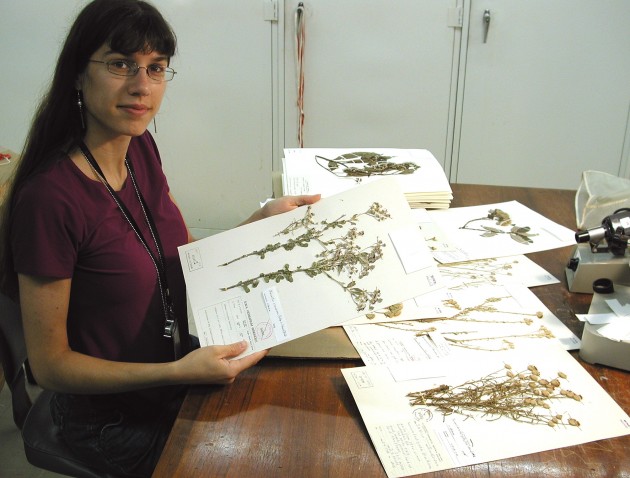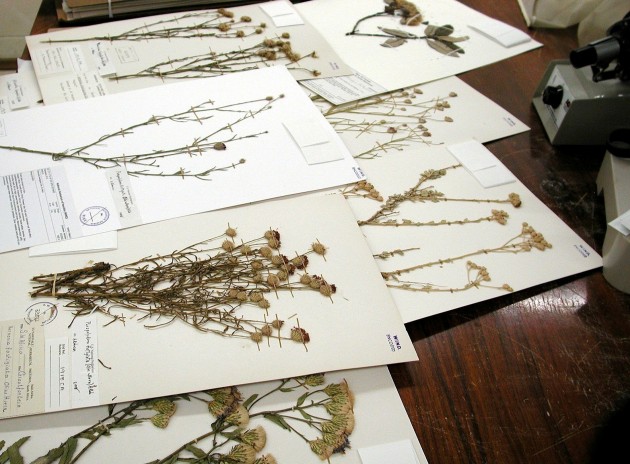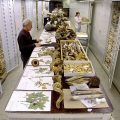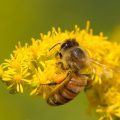A collection of nearly 800 flowering plants was recently acquired by the Botany Department of the Smithsonian’s National Museum of Natural History from the National Botanical Research Institute in Windhoek, Namibia, Africa. The collection includes nearly 160 specimens from the Compositae, or sunflower family. “These specimens are especially welcome because we don’t have many collections from Namibia,” Smithsonian Curator Vicki Funk says. Compositae is the largest family of flowering plants in the world with nearly 25,000 recorded species and is the subject of a new book sponsored in part by the Smithsonian.
How did the Smithsonian come to acquire this magnificent collection? Herbaria periodically skim their collections and when duplicates are found they are offered up to other institutions as gifts for exchange. Typically, based on the needs of their research collections, institutions trade specimens for other specimens. In this case, Esmerialda Klaassen, researcher at the National Botanical Research Institute, was interested in what books the Smithsonian might have to trade.
“We don’t have any plants they want because a lot of herbaria focus mainly on their own regional flora,” Funk explains. At the National Museum of Natural History “we try to maintain a global collection because we ask questions on a global scale.”
For the exchange, the Namibian herbarium chose two volumes of the plant encyclopedia, Families and Genera of Vascular Plants, by Klaus Kubitzki and Clemens Bayer. In return, the Smithsonian received four shipments of Namibian Compositae totaling 800 mounted specimens. This new acquisition adds to the Botany Department’s herbarium collection of some 5 million processed specimens that have been collected from around the world.

Photo: Sara Alexander, a George Mason University graduate student working at the Smithsonian’s National Museum of Natural History, looks over some of the recently acquired plant specimens from the National Botanical Research Institute in Namibia. (Photos by Vicki Funk)
Funk says that “Each piece of puzzle helps us figure out what’s going on globally, and such contributions make the Smithsonian collection that much richer.” More plants from Namibia are expected in exchange for additional books. Funk concluded that “This is a wonderful way to help our colleagues in other countries and at the same time acquire very interesting material for our herbarium.”
—Jessica Porter






